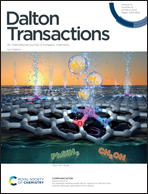Direct sulfhydryl ligand derived UiO-66 for the removal of aqueous mercury and its subsequent application as a catalyst for transfer vinylation†
Abstract
The treatment of mercury pollutants in water has been wide concern. Adsorption is a promising method for mercury removal that has been extensively studied. Nevertheless, the secondary application of the immobilized Hg is seldom investigated. In this paper, the Hg adsorption behavior of UiO-66 bearing sulfhydryl groups is studied. The research shows that the porous structure and sulfhydryl groups of UiO-66-SH can effectively promote the removal of mercury from water. In addition, this work also pushes forward the sequential application of the recovered adsorbent, which contains the adsorbed mercury that may cause secondary pollution. The recovered waste adsorbent, UiO-66-S-Hg, was successfully used as an efficient catalyst for transfer vinylation, which produces value-added products, vinyl benzoates. Eight vinyl esters have been successfully synthesized with a yield of up to 89%. This methodology provides a promising way for not only the treatment of mercury contamination, but also secondary pollution protection and the resource utilization of immobilized Hg.



 Please wait while we load your content...
Please wait while we load your content...